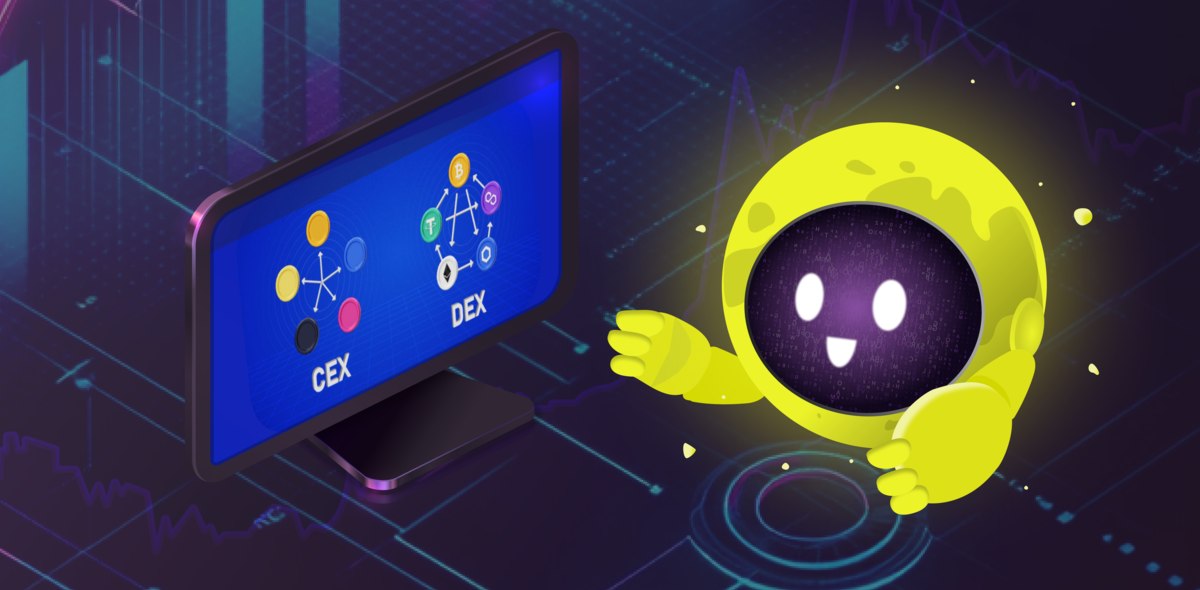
Decentralized finance (DeFi) has been a new paradigm in the crypto world for a few years. By 2024, the DeFi ecosystem will continue to develop rapidly. In this article, we will look at what DeFi is, how it works, and most importantly, what the future trends of DeFi are.
What is DeFi
DeFi (decentralized finance) is a rapidly developing ecosystem of financial applications and services built on blockchain and smart contracts. The main idea of DeFi is to provide people with access to various financial instruments and services without having to turn to traditional intermediaries, such as banks, exchanges, or insurance companies.
Most DeFi applications are based on smart contracts in the Ethereum Blockchain. A smart contract is a computer code or algorithm that automatically fulfills predefined terms of the contract between the parties. For example, if a user has deposited a certain amount of cryptocurrency in a smart contract as collateral, then he/she will automatically receive a loan in another token on specified terms.
The Use of DeFi Services
Decentralized finance (DeFi) is rapidly developing, offering users a wide range of innovative financial services and products. Despite the lack of clear boundaries between categories, there are six main types of DeFi services:
- Stablecoins. These are cryptocurrency tokens, the value of which is linked to the price of another asset, most often to the US dollar or other major fiat currencies. They can be non-custodial (fully decentralized) and custodial (centralized but integrated into DeFi services). Stablecoins provide price stability and ease of use in the DeFi ecosystem.
- Decentralized Exchanges (DEX). DeFi exchanges allow users to trade digital assets without having to transfer their funds under the control of a centralized platform. They work based on smart contracts and use a decentralized order book or algorithmic matching of orders and price settings. Examples of several popular DEX are Uniswap, Sushiswap, and Curve.
- Lending and loans. DeFi protocols enable users to issue and borrow cryptocurrencies directly, without the involvement of traditional financial institutions. Smart contracts automatically select lenders and borrowers and set interest rates and repayment periods. Leading lending platforms: Aave, Compound, MakerDAO.
- Derivatives. DeFi derivatives are synthetic financial instruments, the value of which depends on the price of the underlying asset or a group of assets. Futures and options are the most common, allowing you to trade or hedge the risks of future changes in the prices of crypto assets. Platforms for working with derivatives: Synthetix, dYdX, and Futureswap.
- Insurance. Decentralized insurance protocols offer users protection against specific risks of the DeFi space, such as the hacking of smart contracts, loss of access to a wallet, or critical errors in the code. Users can buy insurance coverage, provide assets to insurance pools, and receive premiums. Examples: Nexus Mutual, Cover Protocol.
- Asset management. DeFi opens up new opportunities for creating and managing investment portfolios based on crypto assets. Decentralized protocols offer services for automatic portfolio rebalancing, the aggregation of returns from different sources, and copying strategies for successful traders. Platforms: Yearn Finance, Enzyme Finance, and Tokensets.
Key Advantages of DeFi
- Openness and transparency: All transactions and interactions between participants are recorded in a public blockchain, which allows tracking of the movement of funds and the operation of protocols.
- Accessibility of any user with an Internet connection.
- The open-source code of most DeFi applications can be verified.
The Extensive Features of DeFi
- Creation of decentralized exchange (DEX) for the exchange of tokens without intermediaries.
- Platforms for issuing loans and credits.
- Receiving passive income by staking or providing liquidity.
- Creating stablecoins linked to fiat currencies or other assets.
DeFi Trends in 2024
Traditional Finance Integration
The convergence of DeFi and traditional financial systems is gaining momentum with traditional institutions progressively incorporating DeFi protocols into their operations. This integration aims to achieve universal accessibility to financial services, with improved efficiency and inclusivity.
P2E Gaming
The global blockchain gaming market is poised for explosive growth, reshaping the gaming industry through decentralized and blockchain-based technologies. This attracts millions of users and marks a crucial year for Web3 adoption.
DEX and AMM Innovations
Decentralized Exchanges (DEXes) and Automated Market Makers (AMMs) continue to play pivotal roles in reshaping financial markets by democratizing financial services, optimizing liquidity, and fostering a more inclusive global financial ecosystem.
Cross-Chain Compatibility
Crypto bridges are becoming integral elements in the field of blockchain technology, allowing investors to move assets to tier 2 networks such as Polygon or Arbitrum, providing faster trading of ERC-20 tokens and access to exclusive markets on various blockchains; initiatives such as Polkadot and Cosmos are leading the way to create a connected DeFi ecosystem.
Layer 2 Solutions
Scalability remains a challenge for DeFi platforms, prompting the adoption of Layer 2 solutions like Optimistic Rollups and zk-Rollups. These technologies enhance transaction throughput and reduce fees, thereby making DeFi more accessible to users.
Sustainable Yield Farming
Yield farming has been a popular DeFi strategy, but concerns about sustainability have arisen because of high gas fees and impermanent losses. In 2024, projects focused on optimizing yield-farming protocols to ensure long-term profitability for participants.
Decentralized Identity
Enhancing security and privacy in DeFi transactions is crucial, leading to the integration of decentralized identity solutions. Self-sovereign identity platforms, such as uPort and Civic, are gaining traction to provide users with control over their data.
NFT Integration
Non-fungible tokens (NFTs) have captured mainstream attention, and their integration into DeFi is a growing trend in 2024. NFT-backed loans, collateralization, and trading are expanding the utility of digital assets in decentralized finance.
Regulatory Compliance
As DeFi matures, regulatory compliance becomes paramount to mainstream adoption. Projects are increasingly focusing on compliance solutions to navigate legal frameworks while maintaining decentralization and user privacy.
Conclusion
The year 2024 promises to be an exciting time for DeFi enthusiasts, as the industry continues to innovate and evolve. These trends shape the future of decentralized finance from cross-chain compatibility to sustainable yield-farming practices. By staying informed and actively participating in this dynamic ecosystem, individuals can capitalize on the opportunities presented by these emerging trends in DeFi.




